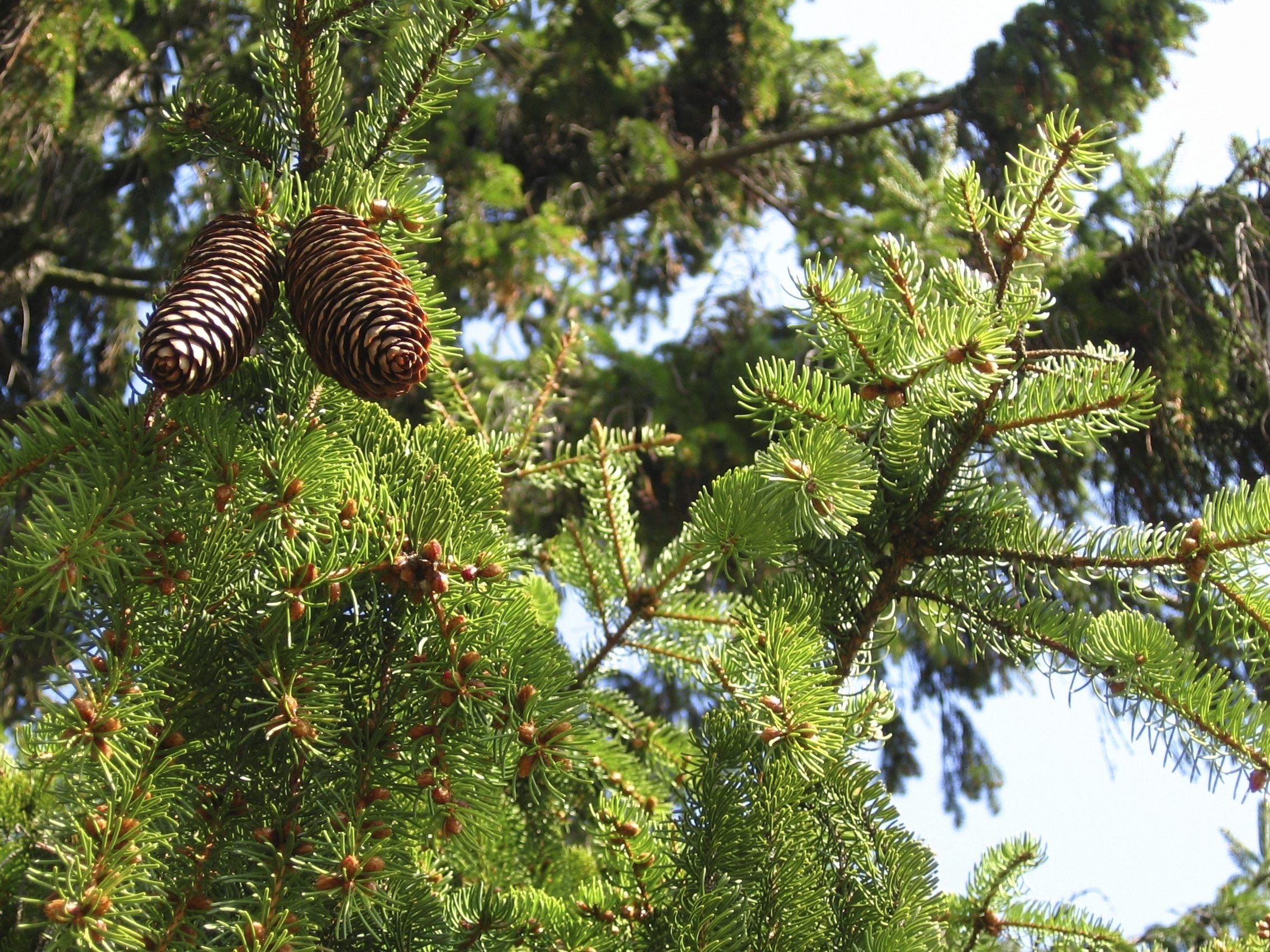Norway Spruce Tree Info: Care Of Norway Spruce Trees


Norway spruce (Picea abies) is a tough conifer that makes for an easy-care landscape tree in USDA plant hardiness zones 3 through 7. It is also planted extensively for forest restoration and windbreaks. Planting a Norway spruce is easy because it competes well with grass and weeds and requires no site preparation. Read on for more information about care of Norway spruce trees.
Norway Spruce Tree Info
The Norway spruce tree is native to Europe. However, for over a century it has been planted in this country for both ornamental and utilitarian purposes. The tree roots are strong and the trees can withstand high winds, making them excellent windbreaks. The trees bear stiff evergreen needles up to an inch (2.5 cm.) long, colored a shiny forest green. The bark is a red-brown and furrowed. The seed cones are large and can grow 6 inches (15 cm.) long. They mature in the fall.
Norway Spruce Growth
Norway spruce growth is exceptional. The trees grow relatively fast – up to 2 feet (61 cm.) a year – and their crowns develop a pyramid shape. The branches may drupe slightly at the tips, giving the trees a graceful allure. If you are thinking of planting a Norway spruce tree, it is important to understand that the tree can reach 100 feet (30.5 m.) or more in the wild and live for centuries. Although the tree stays shorter when cultivated, homeowners often underestimate the space the tree takes when mature.
Planting a Norway Spruce Tree
The more Norway spruce tree info you have, the more you will see that planting a Norway spruce tree is a good idea. The tree has many good attributes. First, you won’t need to clear out grasses or work the land to prepare a site for planting a Norway spruce tree. This spruce competes against grasses and weeds, and wins. In addition, the tree is drought tolerant. As a conifer, it can go into shut-down mode when irrigation is lacking. At the same time, it is one evergreen that tolerates wet soil. Plant it in marshy soil and it will thrive. You can plant Norway spruce in sun, shade, or partial shade and it grows just the same. It is tolerant of poor soil but also grows in rich, fertile soils. Pest resistant, the trees hardly ever fall victim to insect damage or disease. Deer and rodents leave Norway spruce alone.
Care of Norway Spruce Trees
Required Norway spruce care is minimal. If you plant the tree with sufficient elbow room, you may not have to lift a finger other than providing an occasional drink during dry periods. Unlike many trees, the Norway spruce does not produce suckers. It is because of this, the tree is not invasive. Digging out suckers is not part of Norway spruce care.
Sign up for the Gardening Know How newsletter today and receive a free copy of our e-book "How to Grow Delicious Tomatoes".

Teo Spengler is a master gardener and a docent at the San Francisco Botanical Garden, where she hosts public tours. She has studied horticulture and written about nature, trees, plants, and gardening for more than two decades, following a career as an attorney and legal writer. Her extended family includes some 30 houseplants and hundreds of outdoor plants, including 250 trees, which are her main passion. Spengler currently splits her life between San Francisco and the French Basque Country, though she was raised in Alaska, giving her experience of gardening in a range of climates.